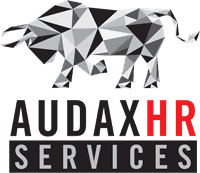HR professionals typically understand what an applicant tracking system (ATS) does, such as creating job descriptions, managing applications and guiding candidates through the hiring process. But when you’re seeking a new HR job, it’s the other side of the ATS you need to consider. What happens when you apply? How can you make sure your resume is getting into the correct hands? What steps can you take to be certain that recruiters are considering you as their first choice and not as a later option if other candidates don’t pan out?
Here are five tips to help you tailor your resume for ATS review. Let’s start with a sample position for a director of human resource role. While this is an executive-level position, the advice here is applicable to all levels of employment.
Tip #1: Be Selective
There are plenty of things to consider before you start writing your resume. First is settling on which positions you want to apply to. It’s important to be selective. Even if you need a new job ASAP, avoid the temptation to send your resume to as many places as possible.
HR professionals often say they want to create one resume they can send to many employers. Unfortunately, that approach simply doesn’t work anymore. Every resume you submit needs to be tailored to the specific position you are considering.
That doesn’t mean you need to rewrite your resume from scratch every time. Instead, change your skills to align with keywords; make small changes in the order of your bullet points; and consider using different, more relatable job titles. If you apply to two to three similar positions, you won’t need a resume overhaul for each one.
Tip #2: Don’t Waste Anyone’s Time
There are three factors to consider to make sure you aren’t wasting your time or the hiring manager’s time: location; minimum requirements; and whether you align with the employer’s culture, mission and values.
The landscape for work from home is still evolving, but one common trend is a geographical location associated with remote positions. For example, you might see “Remote in Austin, Texas.” In other words, you’ll need to live in, or near, Austin to be a top contender.
While remote may give the impression you can work from anywhere, it often doesn’t mean that exactly. Hybrid models are becoming more popular to instill collaborative cultures, which means more businesses will want employees in the office at times, and they don’t want to pay travel expenses when those times arise. Certifications, taxes and legal issues all need to be considered as well. So it may be a good idea to look for positions in, or near, your place of residence, even when seeking remote work.
Minimum Requirements
Job seekers should match at least 75 percent of a job’s requested qualifications to be seriously considered for the position. Of course, there is plenty of evidence to suggest that connections, personal talent and years of experience count for a lot. And it’s important to remember that you can’t move up in your career unless you give yourself room to grow. Therefore, it’s okay to apply for your dream job even if you don’t meet 100 percent of the requirements.
Culture, Mission and Values
Arguably the most important part of the job hunt is finding a place where you will fit in and thrive. This aspect of a company isn’t always in the job description. You’ll have to do some digging on the company’s website, on LinkedIn to review current employee profiles, and on Glassdoor to read reviews and opinions from current and previous personnel. Other employee review sites that are worth a look include Career Bliss, Comparably and Fairy God Boss. Also be sure to tap into your network to see if anyone knows someone who works (or worked) at your target company.
Tip #3: Implement Keywords
Once you’ve officially decided on the positions for which you’ll apply, determine the keywords you plan to use. Keywords are essentially descriptors of the ideal candidate you think you are, strategically dispersed throughout your resume. You can find a keyword in almost every section of a job description.
For example:
We are an industrial technology company building security-first Brilliant Machines to accelerate Industry 4.0. Our work requires us to think critically, act boldly and move quickly.
The bolded words in this example are some of the keywords to use.
This company is looking for someone with experience in industrial technology who has handled accelerated processes, operations or projects in their industry. The description has listed a few soft skills too: critical thinking, boldness and efficiency.
The Director of Human Resources is the leader of our human resource department and serves as the right hand to the chief executive officer in two main areas of focus:
The title of the position you are targeting is another keyword, and the description shows they’re hunting for a leader who can collaborate with executives and make strategic decisions.
The rest of most job descriptions outlines specific duties and responsibilities. As you read through those, ask yourself if you can say yes to what they want. For example:
If you can reasonably say that you have planned, led, developed, coordinated and implemented policies, training, etc., then you’ll want to organize a bullet point in your own resume showing how you’ve done that. This tactic alone will get you the majority of the keywords needed to land at the top of the applicant pile.
Tip #4: Show, Don’t Tell
As mentioned above, showing how you’ve been an invaluable asset to your current company will give you a leg up on the competition. The best way to do that is by providing specifics about your responsibilities. Let’s use the following example. If the job description states that the person in the position will:
Assuming you were able to say, “Yes! I’ve done something similar to that!” you can craft a bullet point for your resume that reads:
To explain how you contributed to company culture, you can add a separate bullet point describing the types of environments you’ve created at previous employers.
Tip #5: Keep It Simple
Writing a resume can be complicated when you put every best practice into place. There is so much to consider that it can become overwhelming, especially if ATS concerns are hovering over your shoulder. The one thing you should never include are complicated graphics, tables, templates, symbols, columns or boxes. The simpler your document, the better.
Let’s be honest here. From your side as an HR professional, you know at first glance how a resume is going to be parsed through ATS software. It will be black and white with no frills—just pure information. So when writing your optimized ATS resume, less is more. The cleaner, more concise your bullet points, the better. Use white space, leave out tables and include all pertinent information. That’s really all you need for an ATS-tailored resume.
Mary Southern is the founder of Resume Assassin in Austin, Texas, and offers more than 12 years of experience in resume writing, human resources and career and academic advising. She has helped thousands of professionals across a variety of industries break into a wide range of leading companies. Learn more at www.resumeassassin.com and connect with Mary at www.linkedin.com/in/mary-southern.
This content was originally published here.



